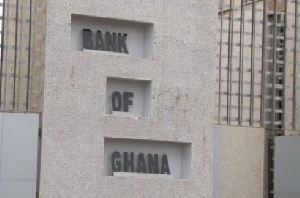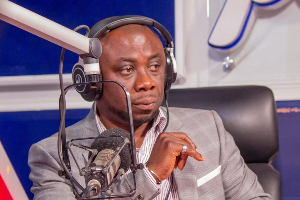Attempts by the central bank to hem in inflation continue to yield less than satisfactory results, as a 0.3 percent rise in September appears to confirm the Statistical Service’s suspicion that traders could be hiking prices ahead of the twin events of the December 7 polls and Christmas.
Government Statistician, Philomena Nyarko, announced yesterday that year-on-year inflation rose to 17.2 percent in September, from 16.9 percent the month before, further making the BoG’s medium-term (second quarter of 2017) inflation target of 8±2 an uphill task.
In August, when inflation rose by 0.2 percent, the central bank said it was not significant enough to distort its medium-term inflation outlook.
Food inflation, this time, rose by 0.5 percent to 9.0 percent, whilst non-food inflation, pushed by education, housing, water, electricity and gas, among others, rose by 0.1 percent to 21.6 percent.
The prices of imported products increased from 17.3 percent in August to 18.7 percent in September, but there was a 0.1 percent drop in the prices of locally produced goods to 16.6 percent.
Speaking to journalists Dr. Philomena Nyarko said: “We are speculating that it [the increase in the price of imported items] may be that people are expecting higher exchange rates; and also because of the election cycle, people may be adjusting their prices.”
The central bank, however, maintains that the upcoming elections and the fears of exchange rate volatilities associated with it are no cause for concern.
“Businesses, the financial sector and also consumers, are all expecting inflation to come down, so that tells us the 2016 election is not a big issue as far as the economy is concerned,” BoG Governor, Dr. Abdul Nashiru Issahaku, said on September 19, 2016, at the Monetary Policy Committee meeting.
“We haven’t seen any indication that the election is a real concern. Our surveys and even consumers tell us the economy is gradually picking up,” he said.
However, a trend analysis of the figures show that inflation rarely declines ahead of December in view of increased buying and selling for Christmas.
In September, 2015, inflation moved to 17.4 percent, from 17.3 percent, remained constant in October, but further inched up to 17.6 percent and on to 17.7 percent in December of that year.
Should the trend continue this year, it will further cast doubts on the Bank of Ghana’s medium-term inflation target of 8±2.
At the last MPC meeting, BoG maintained that the target can be achieved owing to its adoption of a tighter monetary policy.
“The Committee noted the moderation in headline inflation since the July meeting on the back of continued cedi stability, easing inflation pressures, and tight credit conditions which implicitly reflect continued monetary policy tightness.
This, together with projections of tighter fiscal consolidation and lower growth, contributed to the inward shift in the forecast horizon from the third quarter to the second quarter of 2017. Going forward, the continued monetary and fiscal policy tightness, together with stability in the foreign exchange market should support the disinflation process,” Dr. Issahaku said.
The central bank admits, though, that upside risks to its inflation exist, in the form of unanticipated shocks, especially with regards to the intermittent upward adjustments in petroleum and utility prices, and their second round effects.
The local currency has remained fairly stable, depreciating by just about 4 percent since the turn of the year as against a 16 percent decline within the same period last year, a reason the BoG remains confident.
Business News of Thursday, 13 October 2016
Source: thebftonline.com

















